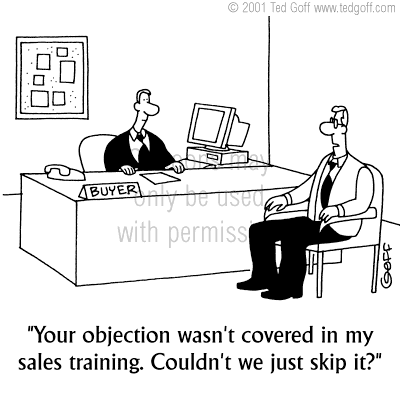 |
| credit: tedgoff.com |
TIPS ON DEALING WITH OBJECTIONS
WHEN PRESENTING A PROPOSAL, PLACE YOURSELF IN THE SHOES OF OTHERS
think of all the possible objections they might raise and have appropriate answers or a best response
DON'T BE AFRAID OF OBJECTIONS
objections really indicate sincere interest
objection merely records they aren't in agreement with you for now with your current proposal
DO NOT DEAL WITH EACH OBJECTION THE MOMENT THEY ARE RAISED, DRIFTING FROM THE MAIN TOPIC
you risk giving more importance to the objections then they actually deserve
THE ABSENCE OF AUDIENCE RESPONSE AFTER PRESENTATION AND DISCUSSION MEANS THAT MOST OBJECTIONS HAVE SIMPLY BEEN LAID TO REST
There are two categories of objections:
- Emotion Objections: triggered by an emotional response
- Factual Objections: based on logical and factual reasoning
TECHNIQUES OF OVERCOMING OBJECTIONS
1. Answer question with a question
2. Allow others to speak
3. Acknowledge good points
4. Clarify statements made
5. Identify important points
6. Provide feedback
7. Soften objections by eliminating confrontation
8. Isolate the most important objection
shard from:
Shiv Prasad
Better Life
Accountants Today, April 2008

